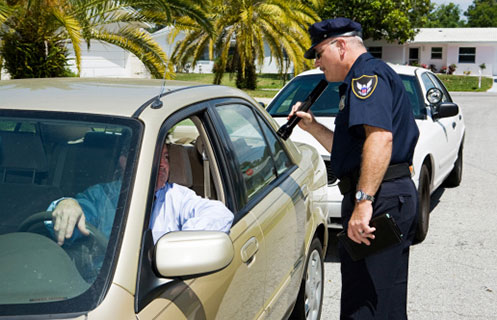Nobody likes getting pulled over, but there are some tricks one can deploy to make the situation go as smoothly as possible: Keep your hands on the steering wheel; don’t speak until or unless spoken to; and don’t get killed.
It may sound like a cynical joke, but it’s the genuine sentiment behind new advice offered in the most recent edition of the Arizona driver’s manual.
The language, a response to the 2016 death of Philando Castile at the hands of a Minnesota police officer who had pulled him over for a burned-out brake light, was proposed by Arizona state representative Reginald Bolding (D—Laveen) and added to the manual late last month.
Its intention is to help gun owners in the no-permit state navigate the tricky situation of getting pulled over with a firearm in the car, he said. The guidelines let drivers know what to expect in a routine stop, as well as what rights they have, but also caution individuals against demanding those rights too strongly, advising instead to notify the proper authority of their mistreatment at a later time.
Tips, which Bolding said were sourced from a number of different law enforcement establishments, also include immediately alerting an officer of the gun’s presence in the car, rolling down windows slightly, especially if they’re tinted, and avoiding any fast moves, whether reaching for something within the vehicle or attempting to exit it.
In a state like Arizona, which allows anyone of legal age to carry a concealed weapon, the suggestions are especially helpful. But Bolding, who is black, noted that the language could be particularly pertinent for black or Hispanic drivers.
“When you look at what’s taken place across the country, you have seen a majority of individuals who are people of color that have had higher incidence of interactions with law-enforcement officers, particularly in shootings,” he told Tuscon.com. “Hopefully we can get to a place where that’s not the reality.”
Statistics on police shootings in general remain difficult to track—primarily because there is no centralized reporting system for such incidents, and information is divulged by police departments on a voluntarily basis.
Numbers vary widely, from the 5,830 killings between 2000 and 2014 recorded by the FBI to the at least 12,137 deaths during that same time period reported by the group Fatal Encounters, which is attempting to track down all incidents of police shootings since the year 2000.
What’s not in doubt, however, is the need to help as many people as possible have peaceful incidents when pulled over by police, Bolding said.
“No one should ever leave a traffic stop in a body bag.”
